Lawn care takes work. If you recently overseeded your lawn, you may be wondering what type of work follows. This article will answer a common question: should you bag your grass clippings after overseeding or leave them behind?
If seeding weeds were present, you should bag your grass clippings after overseeding. However, you can add these clippings to compost and reap the benefits later. Are no seeding weeds present?
Without seeding weeds, you don't need to bag your grass clippings after overseeding. You can use these clippings to feed your lawn, as they will naturally decompose and give nutrients to your new seeds.
Now you have a general sense of when you should and shouldn't bag your grass clippings. Keep reading as we give you more details on bagging and answer when you should mow your lawn after overseeding.

When Should You Bag Grass Clippings?
Ultimately, it is up to whether or not you bag your grass clippings after overseeding—however, there are some good reasons to opt for bagging them in some cases.
Did you over-seed to repair your lawn after a weed invasion?
If you are dealing with weeds in the yard, you should bag your grass clippings. Utilizing these clippings over your new seeds will promote more weed seeds to spread and take over your lawn.

The same goes for lawns that have been affected by fungus or other pests. If these factors can survive in your grass clippings, you want to bag them up and dispose of them far from your lawn to avoid repeating the issue.
Perhaps you don't like the look of grass clippings on your lawn. This is another reason to bag up grass clippings. You can always use the clippings later after they've dried out.
Add them to compost, or you can dispose of them entirely.
Read more on our blog post: What's The Best Time To Aerate And Overseed A Lawn?
Can Grass Clippings Cause Thatch?
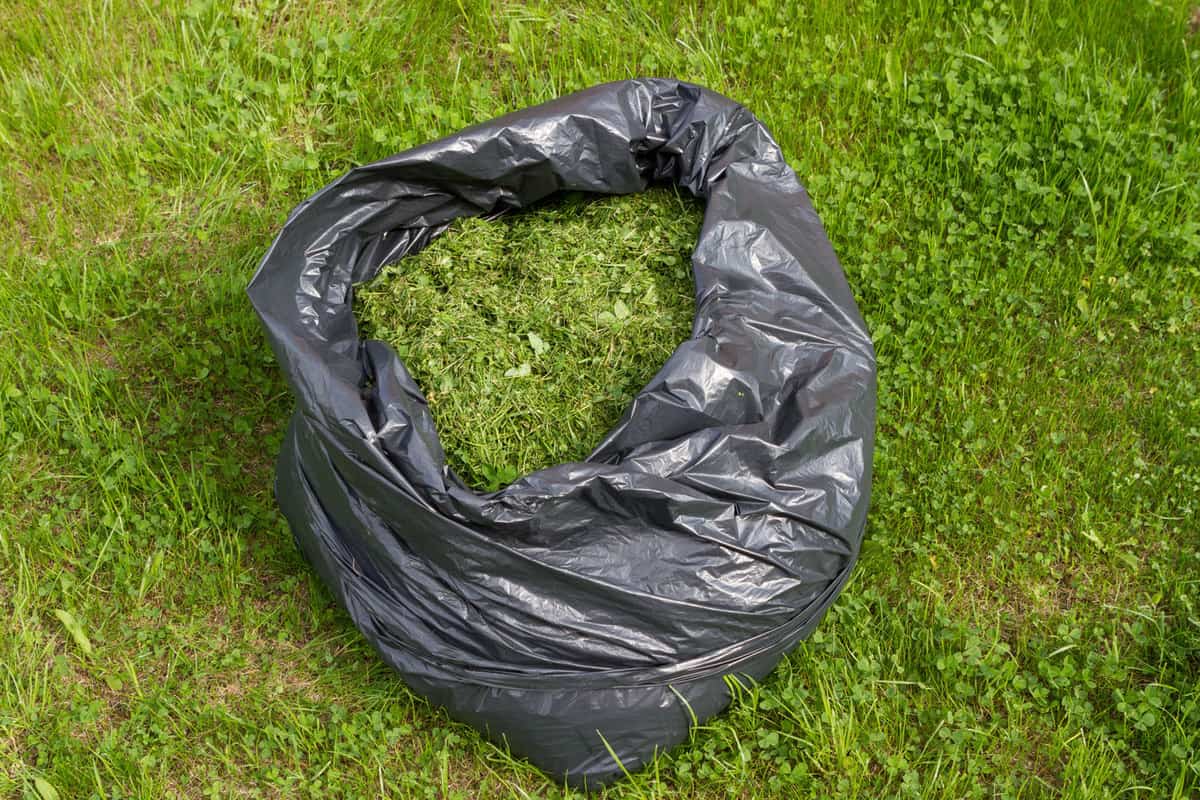
Thatch is a layer of organic materials between actively growing grass and the soil underneath. This layer accumulates in lawns with poor soil aeration and drainage.
Unfortunately, this layer creates a breeding ground for pests and disease.
The good news is that grass clippings don't cause thatch. While these clippings are organic material, they decompose quickly and typically without issue.
Keeping up with regular mowing will help your clippings continue to break down and feed your yard.
You don't have to worry about clippings themselves, but there are other factors to watch out for that cause thatch.
For example, improper watering of your lawn, cool soil temperatures, and synthetic fertilizers can all increase the risk of thatch.
Benefits Of Leaving Grass Clippings Behind
While there are reasons behind bagging up your grass clippings, there are many reasons to utilize them in your yard. One apparent reason to leave grass clippings behind on your overseeded lawn is less work.
You can avoid the actual labor of picking up and bagging your grass clippings. Additionally, since these clippings potentially feed your lawn, this may save you some work in fertilizing later on.
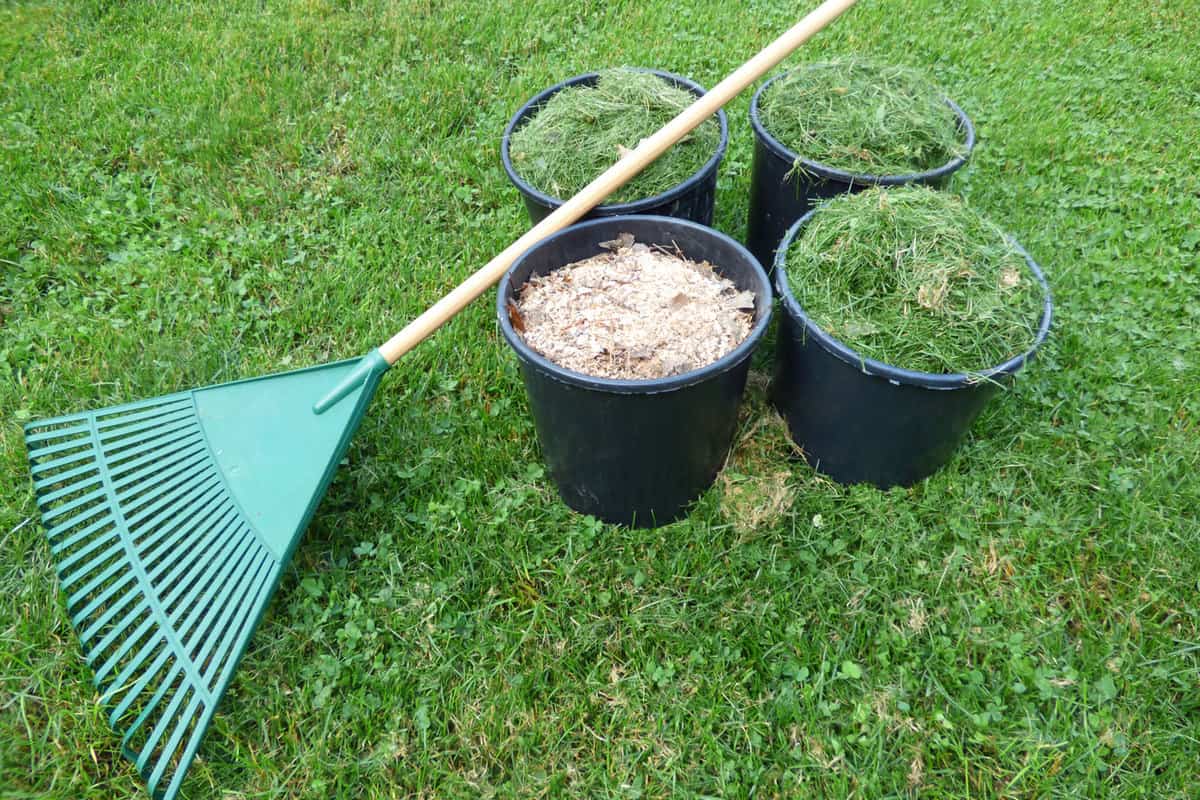
The idea that these clippings provide nutrients to your lawn is another benefit of not bagging them. Grass clippings contain positive supplements for your yard, including potassium and nitrogen.
By leaving your grass clippings behind, you supply organic fertilizer for your new seedlings.
However, if you want to use these clippings for mulch in the future, you should push them to a bare spot in your yard to dry.
When And How Should I Mow After Overseeding?
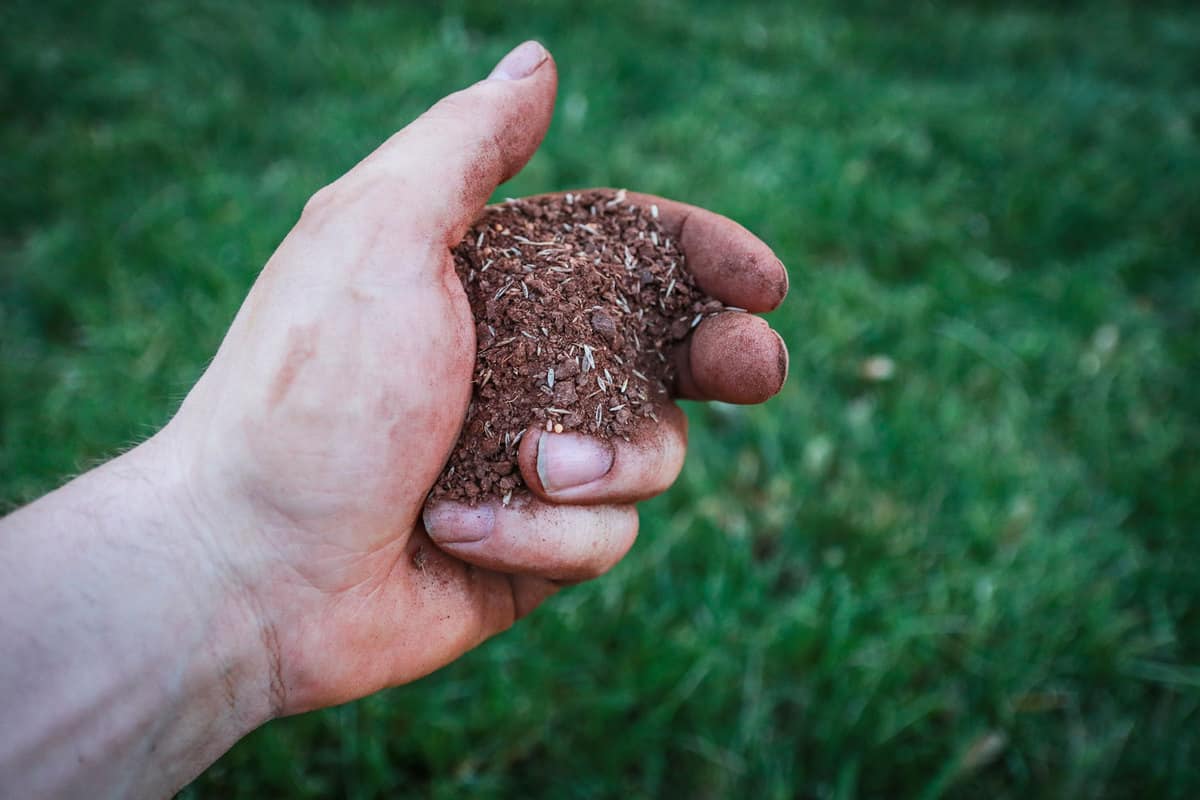
After you over-seed your lawn, you need to allow some time for your new seeds to develop before you mow. The exact waiting period can vary based on the growth rate of your grass and the environmental conditions.
You may need to wait anywhere from 3 weeks to a couple of months. A good rule is to wait for your first mow until your grass reaches about 4 inches high.
Your grass is ready to be mowed once the blades are tight together and you see a lush green color.
Furthermore, it is ideal to wait longer before mowing your grass versus cutting too early. You risk damaging your new seedlings, stunting their growth, or even killing them if you mow your lawn too early after overseeding.
Feel free to leave your clippings behind at this first mow to give your new grass a nutritional boost.
However, you want the clippings to be spread out as much as possible to allow sufficient airflow throughout your lawn.
What Additional Care Does My Lawn Need After Overseeding?
After you overseed, you may be wondering what now? On top of that grace period, before you mow your lawn, there are some recommended care and tips you can follow to ensure your new seeds are successful.
Let's take a closer look at these lawn tips and tricks.
Water Requirements
The most important care tip for a newly seeded lawn is to keep your property moist. You want to avoid flooding your yard, but your seeds need constant moisture to germinate.
Immediately after overseeding, you can begin watering your lawn.
You should aim to water your overseeded lawn twice a day if there is no rain. Once your grass becomes established and is steadily growing, you can start cutting down the watering frequency.
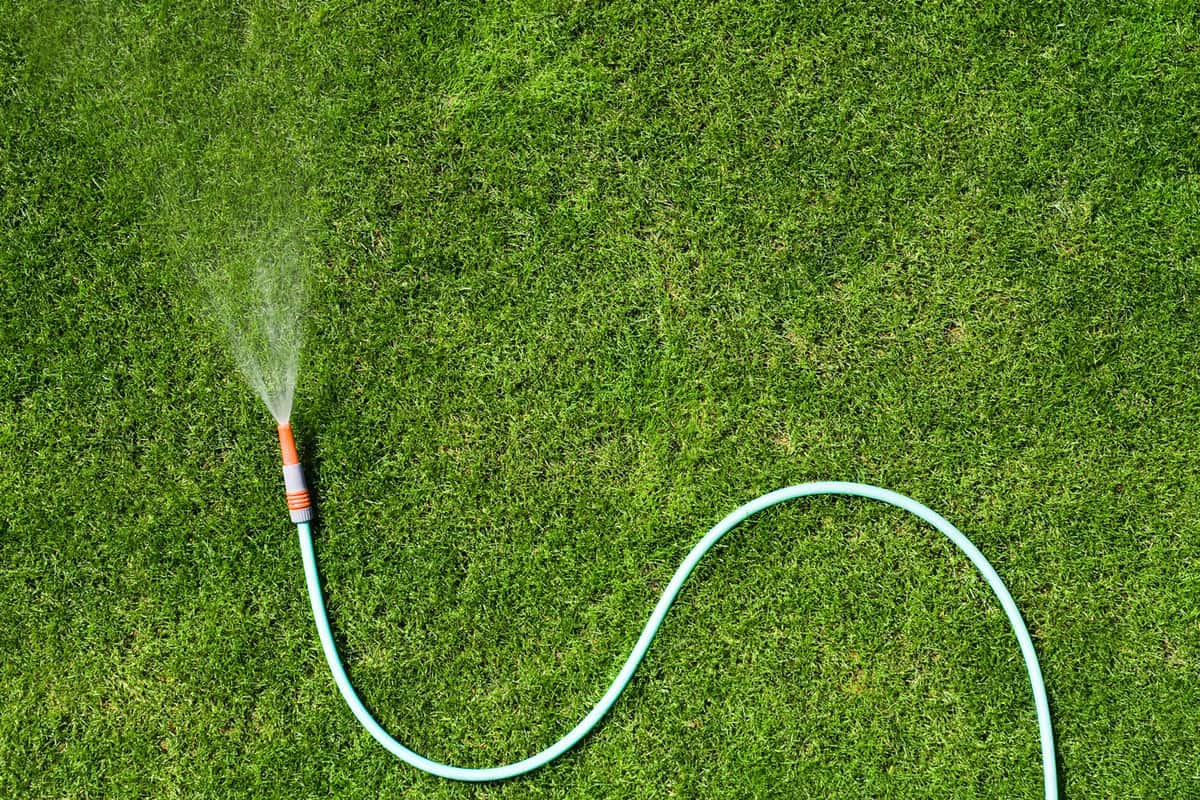
Aim to water every area of your lawn with each watering. It cannot be stressed enough not to let your lawn dry out after overseeding. Allowing newly laid seeds to dry out will cause them to die.
Avoid soaking your lawn, but do aim to water deep. While you want to avoid drying out your yard, too much water can increase the chances of disease and other lawn issues.
Regulating the water requirements for your lawn is a constant need. To help with this, you can consider using timed sprinklers or soaker hoses.
You can find a soaker hose here on Amazon.
Mulching
Another lawn tip is to utilize mulch right after overseeding. Mulching your lawn can help keep your new seeds moist, as this mulch will decrease water dissipation.
While keeping your germinating seeds damp, this mulch is feeding your lawn.
What you use as mulch is dependent on what is available to you and your preference. In some cases, you might add a layer of topsoil after overseeding. Other options for mulch include straw, garden wool, or your grass clippings.
Garden wool is a poly spun wool that allows light and water to pass through. You can typically find garden wool in your local gardening shop or online vendors.
Furthermore, those in cooler climates can benefit from the warmth coming from the wool.
Fertilizing
Eventually, you want to do some follow-up lawn fertilization after overseeding. However, you aim to avoid fertilizing right after you lay your seeds.
Follow-up fertilization happens about six weeks after overseeding.
When you fertilize after overseeding, it is vital to pick the type of fertilizer. Search for a "lawn starter" fertilizer over those formulated for mature grasses.
The difference is these starter fertilizers contain a higher amount of phosphorus.
Phosphorus is a need for new seedlings, as it encourages your fresh grass to grow strong and established roots. Fertilizers for mature lawns contain very little phosphorus, making them less efficient for your needs.
View this fertilizer on Amazon.
If you are concerned about the timing for fertilizing after overseeding, you can fertilize before overseeding instead. Whether you fertilize before or after, your soil and grass reap the benefits.
When fertilizing before overseeding, aim to fertilize about 3-7 days before laying your new seeds. After you have established seeds, you can return to your regular fertilization schedule for your lawn.
Read more on our blog post: Should You Aerate Before Overseeding A Lawn?
To Finish Up
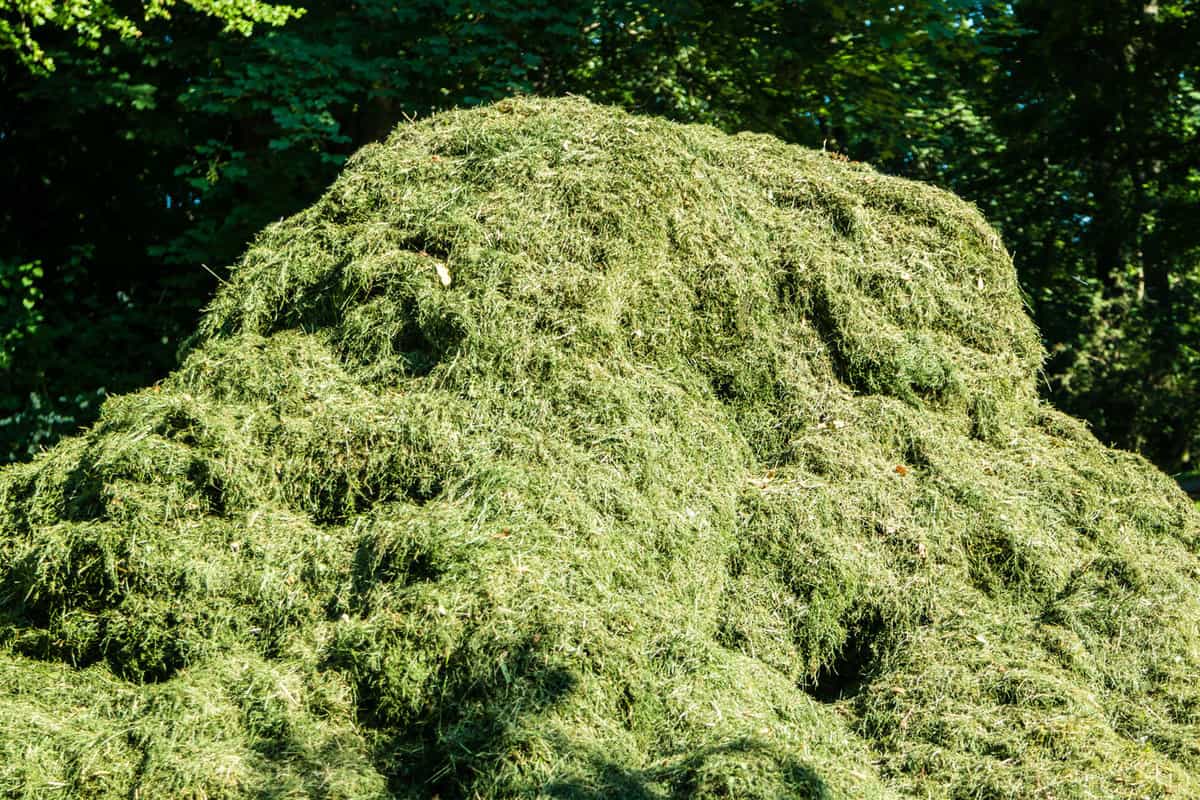
You don't have to bag up your grass clippings after overseeding unless your grass suffers from weeds, pests, and other diseases. We hope you found this article helpful in caring for your lawn and grass clippings.
Need more lawn help? Read this post below!


